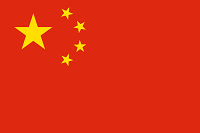The Invention of Everything
It seems the Chinese can legitimately stake claim in inventing pretty much everything, except for maybe the KFC Double Down sandwich. Everything from paper (and subsequently movable type), to the calculator, compass, gunpowder, tofu, crossbow, tea, bell, noodle, pottery, plough, oar, banknote, bomb, kite, toilet paper, and pretty much everything else that helped the develop the world into the entity that it is today. But perhaps most importantly, the earliest archaeological evidence of the consumption and production of alcoholic beverages was discovered in neolithic China dating from around 7000 BC. Yes, it was China who discovered that mixtures of rice, honey, and various fruits could be fermented into alcoholic drinks. Ancient Chinese beers were used in ancestral worship, funerals, and other religious applications. After the Han Dynasty, the popularity of beer faded in favor of huangjiu, a sort of grain based wine which remained the prominent drink of choice for the next two thousand years. It was not until the end of the 1800s when modern brewing practices were introduced to China by Russians, who established a couple of breweries in the city of Harbin. the eighth largest city in China. Harbin is a northeastern city whose culture is heavily influenced by its historical Russian legacy, and known for its annual ice sculpture festival, the largest in the world. Germans and Czechs also established breweries in the city of Harbin shortly after the first Russian brewery. From there, the development of the modern Chinese beer industry has gradually, but steadily developed into a complex market among the global beer industry. Chinese beers use barley much like European and American beers, but they also often contain rice and sorghum much like gluten free beers. Some beers also use Momordica charantia (Bitter Melon) instead of hops as a bittering agent. And in 2001, it was reported that as much as 95% of all Chinese beers produced contained formaldehyde, which was used to prevent sedimentation while being stored, but this has since been prohibited by Chinese law. Craft beer in China has been largely focused on development in major metropolitan areas such as Shanghai, Beijing, and Guangzhou. China's most exported brand, Tsingtao, owns Snow Beer, the best selling beer domestically, with a 21.7% market share. Much like the auto industry, many multinationals are investing in the Chinese market, building and acquiring breweries across the country. Interestingly, Pabst Brewing Company engaged in a licensing agreement to produce a version of their Blue Ribbon brand, which is positioned in the marketplace as a luxury brand, with bottles of its 1844 branded beer selling for $44 each. Many of the country's cities with more western communities now enjoy the recent appearance of local brewpubs. Though there are still only a handful in all of China, they are gaining in popularity. The largest beer festivals in the country are both in Shanghai, known as the Shanghai International Beer Festival and the Shanghai Beer week. Both festivals were first organized in 2012. Specialty beer delivery services, such as Cheers In and Dean's Bottle Shop have also begun operating in recent years. China's beer industry still remains relatively immature and as a result, the largest country in the world ranks 40th with only 32 liters of beer consumed per capita each year.Rated Chinese Beers
11-02-13 - Tsingtao Beer - 2.49, Chinese Adjunct Lager, 4.80%
 The Beer List -
The Beer List -




